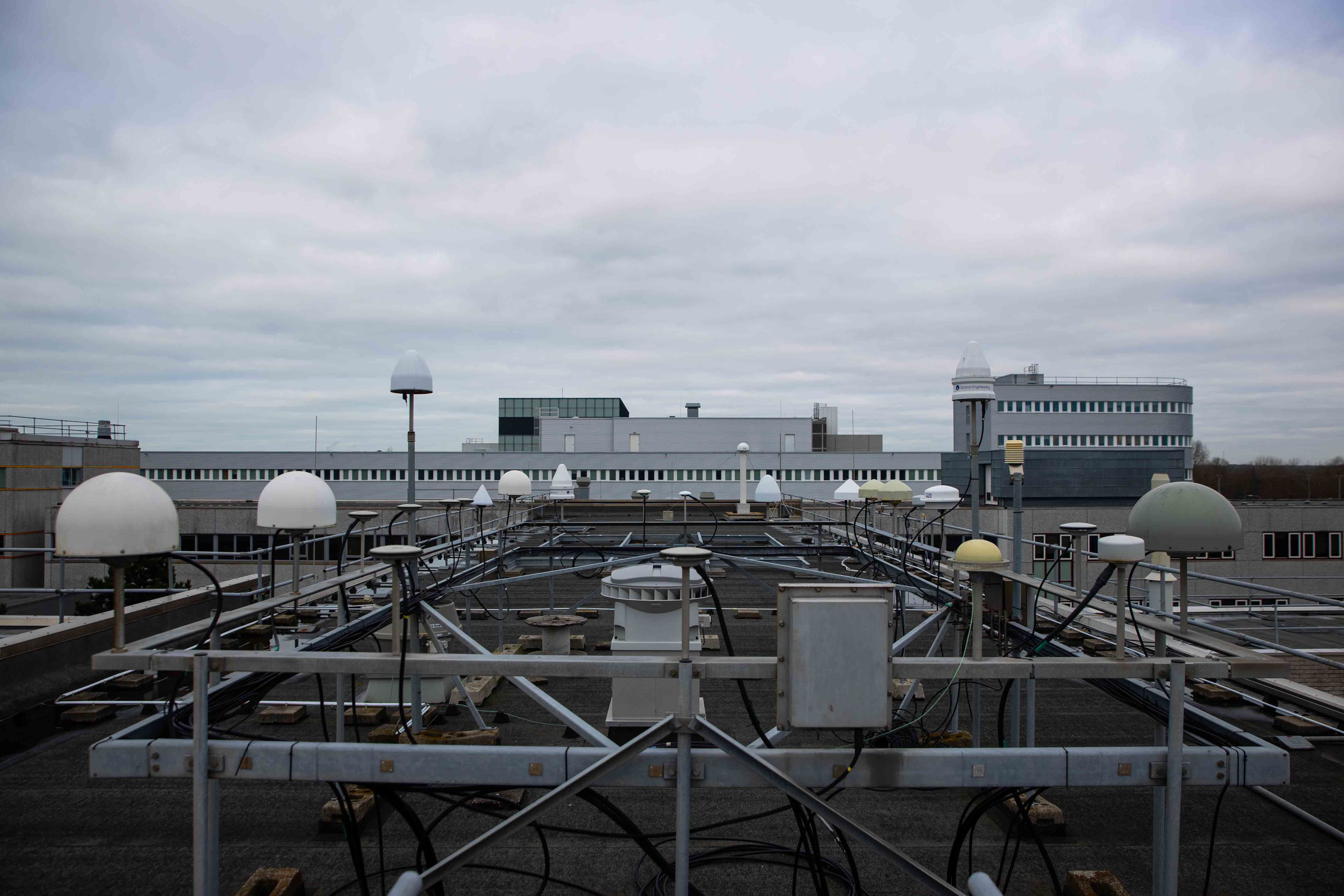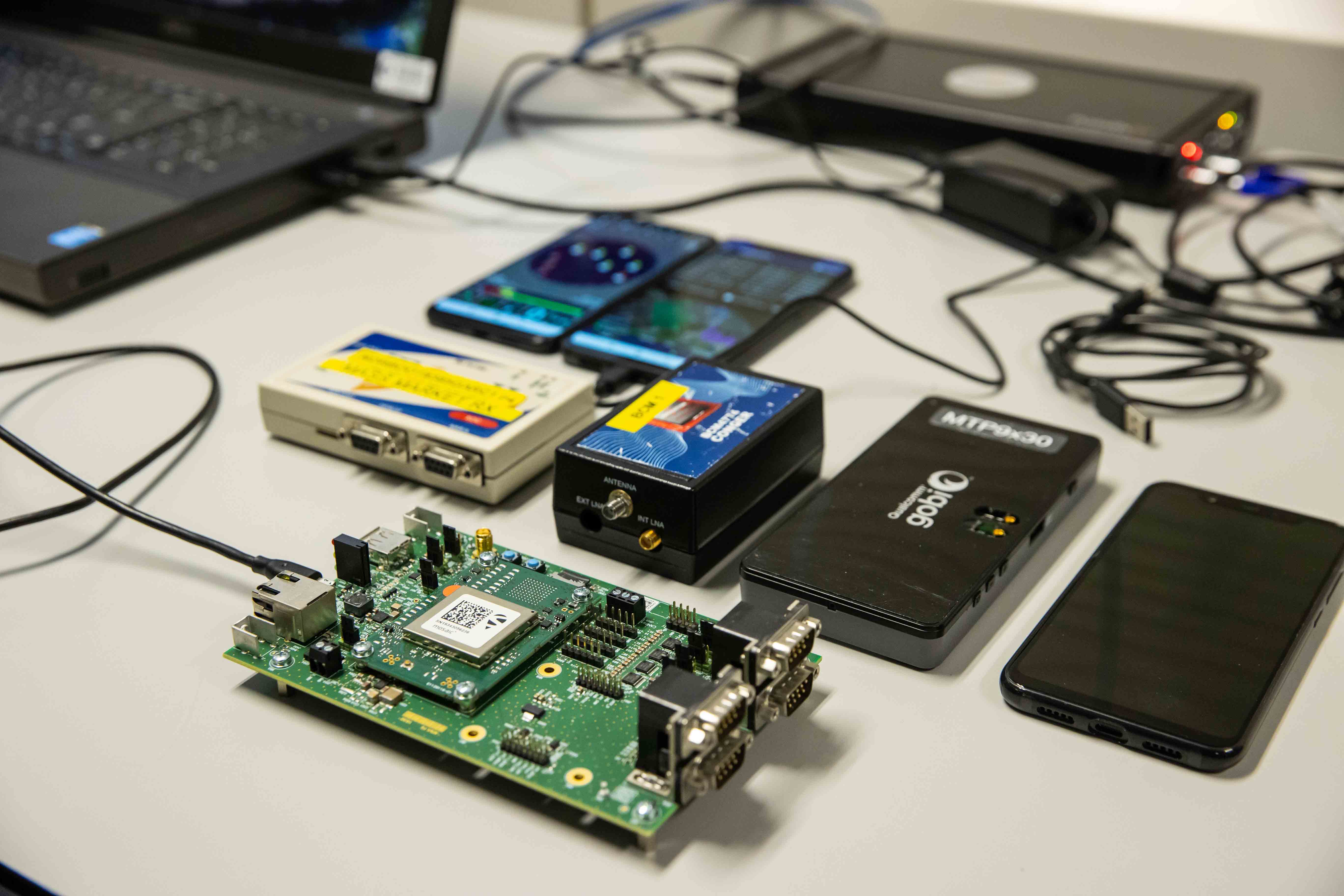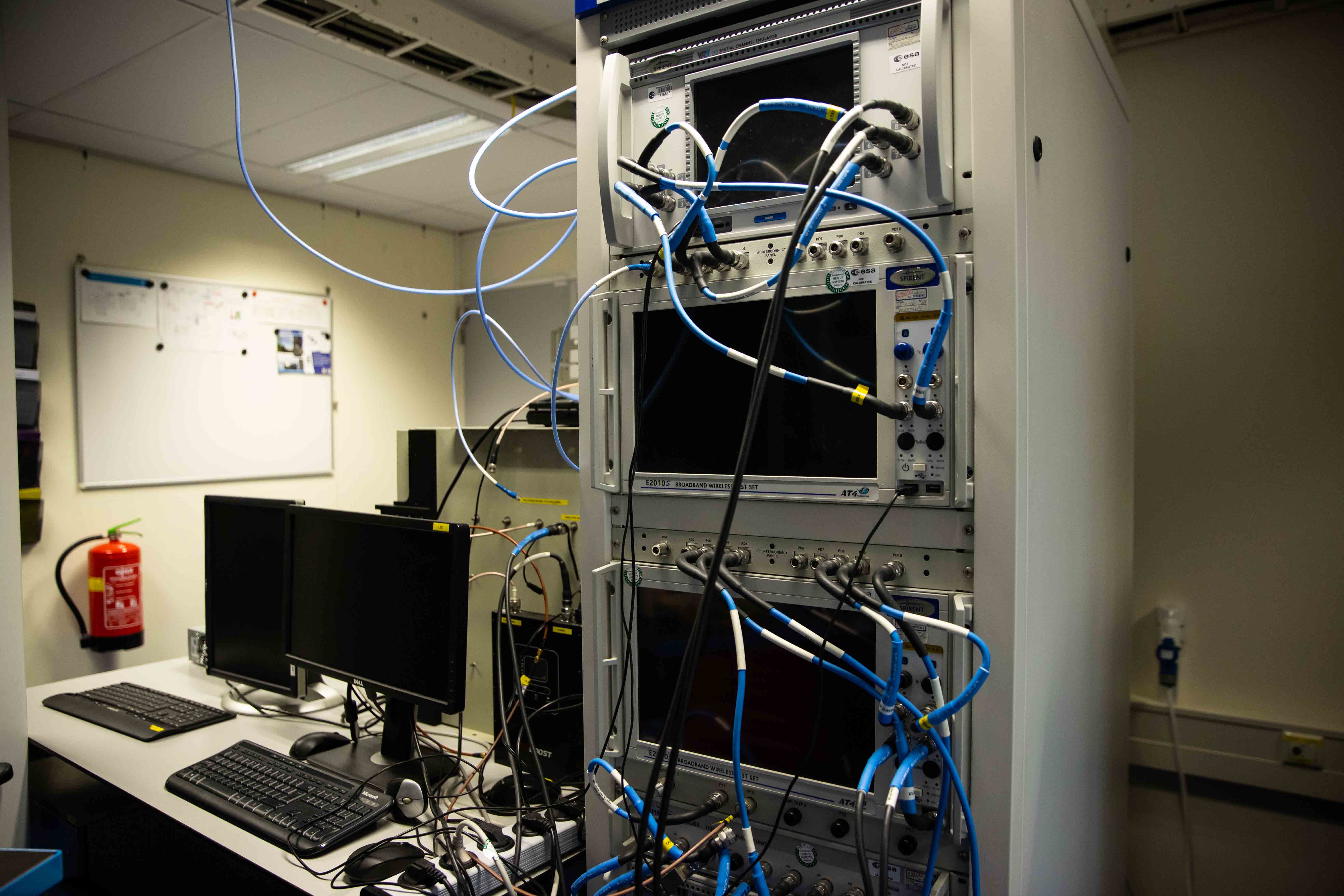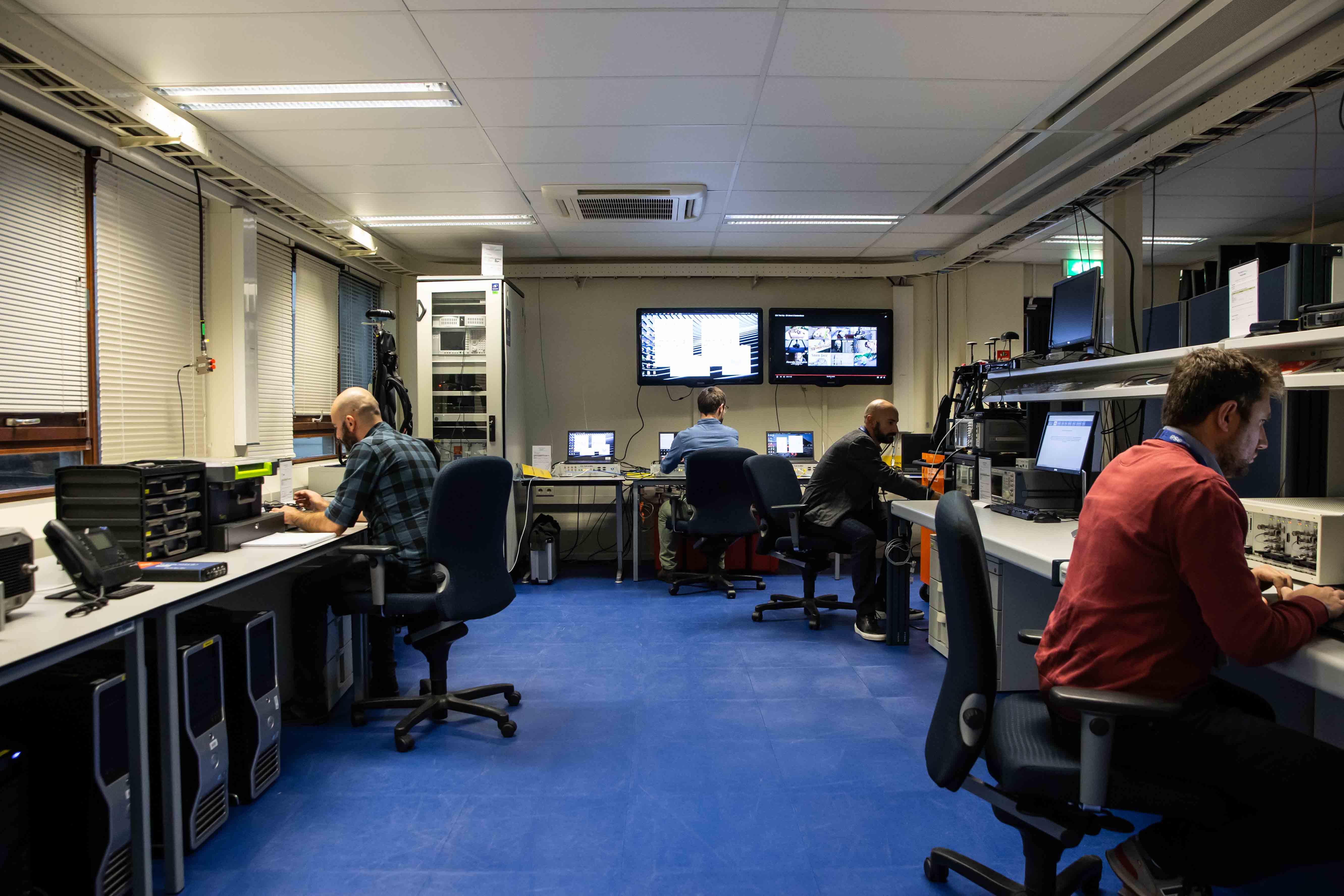- Home
- Laboratories
- Navigation Laboratory
Navigation Laboratory
The Navigation Laboratory (NavLab), investigates the full range of navigation applications, from practical to scientific.
The NavLab represents both an engineering tool and a tests & measurement facility to support the work of ESA internal and external customers while performing tests, analysis and characterisation of navigation systems.
The lab supports test campaigns for navigation and telecommunications services for both ESA and non-ESA projects based on a contract. It manages the receivers laboratory where there are all the required tools and equipment to test GNSS receivers.
Two test-bed vans are used to perform real-time field data collection with GNSS professional and mass-market receivers.
They can collect data in a variety of environments such as open sky, sub-urban and urban. Data is collected and stored for post-processing and the vans can be equipped to carry different types of signal recorders depending on the needs.
LABORATORY OVERVIEW
The laboratory is composed of 2 large working rooms full of state of the art GNSS equipment, 2 server rooms, 2 customized Mercedes Sprinter vehicles dedicated to on-field mobile campaigns, the PRS laboratory, where the GALILEO Public Regulated Signal related activities and equipment are carried out in a secure environment, and an expanding farm of antennas and sensors on the roof.
The NavLab works closely with the UTC and Payload laboratories.
The GNSS equipment and test-beds hosted in the NavLab allow users to perform every type of study and analysis related to PNT (Position, Navigation and Timing).

ESA Test day - ZG drone & Customdrone
SIMULATORS AND ANTENNAS
RF Multi-Constellation Simulators
Spirent
The NavLab is equipped with several versions of the Spirent RFCS including the last available on the market, GSS9000. The GSS9000 provides numerous benefits to all those working in high-end GNSS technology and application development, including comprehensive and feature-rich simulation and full control of all aspects of the GNSS operating environment, inherent repeatability and the ability to apply systematic errors and incidents that are impossible to realise using actual satellite signals. There are a number of GSS9000 in the NavLab ready to accommodate Galileo evolutions through software and hardware updates.
RF Multi-Constellation Simulators
Spirent
Instruments & technical parameters
- SimGEN Yes
- SimInertial Yes
- Channels Up to 160 depending on the unit
- Update rate 1 kHz, 500 Hz, 250 Hz, 100 Hz, 10 Hz
- GPS L1, L2, L5
- GLO L1, L2
- GAL E1, E5, E6, CS
- BDS B1i, B2i, B2a, B1c
- QZ L1, L2, L5
- SBAS L1
- Other features FLEX, interference generator (Agilent), SimRemote
RF Multi-Constellation Simulators
Multi-Box and Multi-Antenna Configurations (SPIRENT)
Besides the standard Spirent RFCS configurations, the NavLab is further equipped with a tailored simulation system, based on the GSS9000 series and additionally configured as two GSS9790 simulators, an interference generator and combiner unit, and a multi-box combiner unit.
Multiple combinations of simulation environments can be achieved with the GSS9790 configurations on top of the baseline GSS9000 and SimGEN capabilities, in particular for conducted and over-the-air RF wavefront simulation, Ground Transmitter simulation (GTx), and multi-output scenarios. The extended configurations provide up to 10 outputs (both composite output and single SV per output) or up to 10 independent jamming beacons per chassis.
Instruments & technical parameters
The tailored system provides a uniquely flexible architecture for use in a wide variety of test configurations, such as:
Single Output, multi-channel, multi-GNSS plus interference
2 or 4 output, multi-channel, multi-GNSS L1 (wavefront simulation when carrier phase aligned)
10 or 20 output, single-channel, single-GNSS L1 (wavefront simulation when carrier phase aligned)
10 or 20 output, multi-channel, Galileo E1 (wavefront simulation when carrier phase aligned)
4 output, multi-channel, GPS L1 + GTx (GPS) L1 (wavefront simulation when carrier phase aligned)
RF Multi-Constellation Simulators
Sim3D (SPIRENT/OKTAL)
Sim3D is an innovative real-time system that enables the reproduction of an authentic multipath environment. The system combines a state-of-the-art GNSS simulator and an advanced GNSS propagation model. The propagation model relies on a 3D scene of the environment, which is used to generate the multipath and obscuration signature that strictly depends on the location of the receiver’s antenna whether static or dynamic.
Sim3D enables testing in fully customisable environments, ranging from deep urban to dense forest to highway. With a wide range of models available, and the ability to build and introduce your own including true-to-life buildings, cars, pedestrians, and trees, the level of detail is completely in your control
Instruments & technical parameters
- Multipath and Diffraction Yes
- Obscuration Yes
- Max. SV per simulator 45 (depending on channel availability)
- Max. num vehicles 1
- Max. num antennas 1
- Max. Multipath per LOS 31 (depending on channel availability)
- Max. reflections per multipath 6 (depending on channel availability)
- Max. 3D model size 5 km2
- Supported PosApp Iteration Rate (SIR) 10 Hz, 100 Hz, 1 kHz
- Sim3D Update Rate 1 Hz, 2 Hz, 10 Hz
- Sim3D Maximum Logging Rate 10 Hz
RF Multi-Constellation Simulators
Augmentation Systems: A-GNSS
Spirent's 8100 LTE system is the optimal solution for conformance and carrier acceptance testing of today’s LTE mobile devices and chipsets. It supports a wide range of application layer and modem layer test areas, and its flexible option-based design allows to add test capabilities as you need them, either in full rack-mount systems or more economical desktop platforms. The 8100 LTE Location Technology Solution is not limited to conducted-mode testing. For OTA (Over-The-Air) testing, it also offers seamless integration with the leading anechoic test chambers.
A-GNSS Instruments & technical parameters
- Technology support UMTS, LTE, A-GPS
- Interference Yes
- Transmission modes Single-antenna, Transmit diversity, Open and Closed loop spatial multiplexing, MIMO
- Modulations QPSK, 16-QAM, 64QAM
- Channel emulators Static, Rice, Rayleigh
- RF Multi-Constellation Simulators
Augmentation Systems: A-GNSS
Operating Bands (DL)
- 2110 – 2170 MHz
- 1930 – 1990 MHz
- 1805 – 1880 MHz
- 2110 – 2155 MHz
- 869 – 894 MHz
- 875 – 885 MHz
- 2620 – 2690 MHz
- 925 – 960 MHz
- 1845 – 1880 MHz
- 2110 – 2170 MHz
- 1475.9 – 1500.9 MHz
- 728 – 746 MHz
- 746 – 756 MHz
- 758 – 768 MHz
RF Multi-Constellation Simulators
Augmentation Systems: A-GNSS
Operating Bands (UL)
- 1920 – 1980 MHz
- 1850 – 1910 MHz
- 1710 – 1785 MHz
- 1710 - 1755 MHz
- 824 - 849 MHz
- 830 - 840 MHz
- 2500 - 2570 MHz
- 880 - 915 MHz
- 750 - 1785 MHz
- 1710 - 1770 MHz
- 1427.9 – 1452.9 MHz
- 698 - 716 MHz
- 777 - 787 MHz
- 788 - 798 MHz
RF Multi-Constellation Simulators
Ifen NCS Titan
The NCS TITAN GNSS Simulator is a powerful high-end satellite navigation testing and R&D solution. It is fully capable of multi-constellation, multi-frequency sim-ulations for a wide range of GNSS applications. The NCS TITAN GNSS simulator consists of the NCS Control Center simulation software (on MS Windows® 10 and Linux OS) and the TITAN RF signal generation unit.
The TITAN GNSS RF signal generator allows the user to enhance system capabilities by easy HW plug-in on-site to match changing user needs or new test specifications.
Instruments & technical parameters
Another RFCS available at the NavLab is the Ifen NCS Titan.
Features:
Channels per Chassis: 32 – 256
RF Outputs: 1-4
Up to 16 frequencies with 16 channels each for all GNSS L-band and IRNSS S-band frequencies
Embedded noise generator module
Generation of Evil Waveforms for GPS and Galileo
Radiated Test Setup
The ab can support radiated tests for specific interference scenarios in cooperation with the CATR anechoic chamber of the Antenna & Sub-Millimeter Waves Section. The test setup can accommodate advanced reception antennas, antenna array and simultaneous radiation of simulated GNSS signals and interference signals with different directions of arrival.
Instruments & technical parameters
- Frequency support 700 MHz to 6 GHz
- Connector Filtered gig Ethernet, USB
- RF ports 8 RF barrel SMA connectors
- Isolation >90 dB. No detection of Wi-Fi traffic up to 6 GHz at close range;
- Absorption >20 dB from 1.3 to 40 GHz; >15 dB down to 700 MHz
RF Record & Replay
Description
The lab hosts a wide range of RF GNSS signals recorders and re-players. A R&R digitalises live signals in L-band (like GNSS, but also HD Radio, LTE, and WiFi ) and stores in digital format the recorded signal/s that can be replayed as many times as needed. The R&R capabilities in the lab can record signals to a maximum of 500MHz per channel than can be tuned on the central frequency of the signal of interest The R&R capabilities of the lab sets a new standard for RF application testing allowing the repeatability of live signal tests. The NavLab is also equipped with a NAS to store all the recordings.
RF Record & Replay
Instruments & technical parameters
- Weight 2.2 Kg
- Size 216 x 200 x 76 mm
- Bandwidth 10 MHz, 30 MHz, 50 Mhz
- Bit Depth 2, 4, 8, 16 (depending on the selected bandwidth)
- GPS L1, L2, L5
- GLO L1, L2, L3
- GAL E1, E5, E6
- BDS B1, B2, B3
- SBAS L1, L2
- IRNSS L5
- LTE Band 4, 12, 17, 30
- Wi-Fi 5.0 GHz, Ch 36-48, 149-161 / 2.4 GHz centred on 2440.878 GHz
Spoofing Generation and Detection
The laboratory has a wide range of GNSS signal simulators capable of generating both the legitimate signals and different kind of interference signals, including jamming and spoofing. The RF signal can be generated using advanced signal generators, or low cost Software Defined Radio (SDR). It is also possible to mix spoofing signals with real signals received from rooftop antennas.
These capabilities allow to test the reaction of the GNSS receivers to attacks, and to generate datasets that can be post-processed by software-defined receiver, supporting the R&D of innovative algorithms for jamming/spoofing detection and mitigation.
Vehicular User
The navigation test vehicles are specialized vans fully equipped with state-of-the-art tech that allows engineer to characterize the satellites navigation performances in realistic user environments. Installed technologies cover from tactical grade intertial measurement system, high-end L-band antennas or customised receivers to mass-market evaluation devices or smartphones. These vehicles have been fully exploited in the frame of Galileo system verification activities since the early constellation phases. Tests have been performed in different environments and dynamic conditions, covering both pedestrian and mobile use cases. In addition to open-sky rural pedestrian and rural vehicle scenarios specified in the Galileo system requirements, also experimentation scenarios such as urban canyons in Rotterdam or Den Haag cities and sub-urban cases like Leiden or Haarlem have been considered.
Instruments & technical parameters
- IMAR+OEM6 Novatel SPAN system (tactic IMU) for reference trajectory generation
- External rubidium reference clock (Symmetricom 8040)
- PRO antennas: navExperience 3GC reference antenna, Novatel
- GPS-704-WB
- MM antennas: tallysman TW3967 patch antenna
- The testing payload changes depending on the test campaign requirements
Pedestrian User
One of the main test uses cases assessed in the ESTEC navigation facilities are the smartphones. Considering that phone users exploiting PNT solutions are mainly walkers, bikers or drivers, testing facilities need to support these type of dynamics. The test-bed that evaluates pedestrian navigation users consists of a backpack fully equipped with navigation technologies that includes a professional antenna and GNSS receiver collecting PNT related data a battery able to supply power in the Test-Bed and a platform to attach the different smartphone devices under test. This set-up is able to save robustly large amounts of data for multiple hours.
The test-bed will collect data for computing reference trajectories with a precise reference system software that later can be used for assessing the accuracy of a PNT solution computed using the data collected with the smartphones.
Instruments & technical parameters
- 3GC antenna and Septentrio Polarx grade receiver for reference trajectory generation
- The testing payload changes depending on the test campaign requirements
Aerial User
A new customised drone to add to the suite of platforms available for testing GNSS technologies and techniques as part of the NavLab at ESTEC (others include test vans, pedestrian and static platforms). It provides hosting capabilities for a significant payload of GNSS receivers, antennas, RF spectrum samplers and support equipment and will allow for the characterisation of their performance in unique user dynamics and environments related to the aeronautical applications of GNSS.
Instruments & technical parameters
- The drone GNN payload isn't fixed, the setup can be modified according to the data collection requirements.
Antenna Farm
The NavLab is equipped with a large array of omnidirectional antennas, as well as a directional 3-m dish, which allows high gain signal reception for further analysis and post-processing. In addition the antenna pointing can be programmed by the user through a Matlab controller, in-house made, in order to be able to schedule satellite pointing and tracking in an unmanned fashion.
Instruments & technical parameters
- HGA (3m-dish)
- A 3m dish HGA steerable from a PC using MATLAB routines or via a purpose built controller enabling GNSS signals to be observed above the noise floor.
Moreover, the NavLab is equipped with state-of-the-art Signal Generators, Spectrum Analyzers and Oscilloscopes (Agilent, Rohde & Schwarz, Tektronix), Rubidium Clocks (RFS), RF Interference generators and detectors (Spirent GSS200D).
TEST BEDS
Septentrio Test User Receiver (TUR-N)
The FOC TUR-N receiver is procured in the context of the Galileo System Validation and Verification activities. It is a multi-frequency, multi-constellation Test User Receiver platform designed to allow a high degree of flexibility and to emulate different classes of receivers.
The FOC TUR-N is up-to-date with the latest evolutions of Galileo FOC2, such as OS-NMA, E6 encryption and I/NAV improvements: Reduced CED, Reed Solomon and Secondary Synchronization Pattern for more robust clock and ephemeris data reception and faster time Synchronisation with the Galileo system time.
The FOC TURN is also pioneering the implementation of the Open Service Navigation Message Authentication (OSNMA). The service is intended to provide the end-users receiver with the capability to verify the authenticity of the received navigation messages broadcast by the Galileo satellites.
The FOC TURN also hosts the capability to record base-based I/Q data on internal drive or external SSD (up to 5 hours recording single frequency at 60MHz sampling).
Mass-Market GNSS Receivers
A complete set of state-of-the art multi-constellation multi-frequency mass-market receivers including Galileo are tested in the NavLab.
Tests are based on simulated scenarios and live campaigns on-field (urban, sub-urban and rural environments) with vehicular and pedestrian users.
IFEN SX3 SW Receiver
The SX3 SW receiver is a modular Dual-RF Multi-GNSS Software Receiver.
Instruments & technical parameters
Its main characteristics are:
- High configurability due to SW based implementation
- Baseband API, for insertion of baseband signal processing
- Sensor API, for insertion of sensor data processing
- Assistance API, for access to Navigation data
- Dual-RF input (2+2 RF chains, GPS/Galileo L1/L5) for
- Simultaneous use with two antenna sources
It is meant as a rapid prototyping solution for the development of state of the art GNSS receivers and it is commercialised by IFEN GmBH.
Goose Receiver
The GOOSE platform is an FPGA based GNSS receiver. It is therefore flexible in processing new or proprietary signals. It comprises 60 hardware channels in real time and provides an open software interface for customer applications. GOOSE grants deep access to the hardware interface, down to e.g. integrate and dump value levels. Additionally, the intermediate frequency signals can be recorded, processed and replayed with the platform.
GOOSE is meant as a rapid prototyping solution for the development of state of the art GNSS receivers.
The platform is dedicated to software developers, mobile communication operators, and system developers. Four separate components characterize the platform: a multi-frequency GNSS antenna, an analogue-frontend board, a baseband board, and the processor system.
Interfaces
- RF input SMA
- 10MHz reference input (SMA)
- 10MHz reference output (SMA)
- x PPS output (1 Hz – max. 25 Hz)
- 1 Ethernet port
- 2 full speed USB ports
Instruments & technical parameters
- Size 225 x 116 x 635 mm
- Channels 60 hardware channels
- GPS L1 C/A, L2C, L5
- GLO G1, G2
- GAL E1BC, E5a/E5b, E5(AltBOC)
- BDS B1, B2
- SBAS Optional L1
- Record&Replay Enabled at IF
- Logging rate Up to 25Hz raw data output (code, carrier, navigation data)
- OS NMA Enabled
Space GNSS Receivers Test-Bed
Software simulation tools are available to assess the navigation performances that a Moon user (spacecraft in a Moon Transfer Orbit, lunar orbiter, lunar lander, rover, human) could reach based on radio navigation satellite systems. Leveraging on a combination of the software tools Matlab and STK (Systems Tool Kit), the reception of navigation signals based on current (1) and future potential navigation systems (2) can be evaluated
A first simulation environment allows the user to compute the standard navigation performances metrics (DOP, signal availability, received power levels, etc.) for a Moon user relying on Earth-GNSS, i.e. Galileo, GPS, Glonass and/or Beidou. Care was given to use realistic GNSS transmitter antenna patterns, i.e. taking into account the antenna sidelobes and their asymmetry over azimuth, becoming relevant for users located beyond the Earth-GNSS constellations altitudes.
Based on a similar architecture, a second environment was built aiming at designing a lunar navigation satellite system relying on the most stable lunar orbits and optionally radio beacons on the lunar surface. This tool enables the user to create various configurations of satellite systems and to evaluate the resulting navigation performances of the selected user.
RUAG PODRIX EM GNSS SPACEBORN RX
The Space GNSS receiver test bed, within the NavLab, is equipped with an Engineering Model (EM) unit of a PODRIX space receiver manufactured by RUAG.
This space receiver is on-board a number of ESA missions including Sentinel-1, Sentinel-2, Sentinel-3, Swarm, EarthCare, and will be included in future missions like Sentinel-6.
This EM can be used to assess the performance of the GNSS receiver can be tested in the lab environment, either connected to a roof-antenna (live-signal tests) or in orbital conditions using a RFCS (RF Constellation Simulator) as well as for event investigations.
SOFTWARE TOOLS
STK (AGI)
STK or Systems Tool Kit is a powerful simulation environment, implemented by Analytical Graphics, Inc. The capacity to propagate objects in Space based on various force models and the wide range of available embedded data providers makes this software package a great resource for space engineers to design their space mission and share results in one integrated environment. It is of particular interest in the field of navigation since it allows the assessment of satellite systems in terms of navigation performances. Currently, STK is extensively used within the TEC-ESN navigation section of ESTEC for two different projects:
In the context of lunar navigation, STK supports both the assessment of the capability of using a Spaceborne GNSS receiver at lunar altitudes, with a focus on Galileo and GPS, aboard various upcoming moon missions as well as the design of a new navigation system around the moon, integrating various navigation transmitter types, i.e. Earth GNSS, lunar satellites and lunar beacons.
In the Galileo Second Generation (G2G) project, STK helps to assess the user performance in Galileo MEO and Non-MEO orbits.
FLIGHT
Flight is a software developed by Astri Polska that allows to perform on-ground testing of space GNSS receivers.
It allows to connect to the receiver to update the receiver's configuration and log telemetry data, as well as to control a Spirent RFCS and log data from it.
The SW currently supports testing of PODRIX receiver and to some extent GNSS-SDR based CubeSat receivers.
PNT2
PNT2 is a development framework for the implementation and assessment of advanced and robust PVT engines/solutions/techniques representative of mass-market receivers, focusing on the operation in harsh propagation conditions.
The PNT2 tool is used to give the user insight in the effect of different estimator settings on the PVT accuracy. The PVT solution is compared to the receiver from which the observables are used and a more accurate reference solution (for which an inertial measurement unit is used).
This reference solution is referred to as the SPAN solution. In this way the influence of different settings (but also the development new features) can be easily assessed.
Instruments & technical parameters
- Language MATLAB
- Pre-processing Hatch filter (smoothing) Clock jumps removal (1 msec) Third Order differential code (for satellite filtering)
- Observation masking Satellite elevation, Carrier-to-noise ratio
PNT2
Measurement weighting models
- Fixed
- Sinusoidal
- Tangential
- Elevation
- C/N0
- C/N0 + sinusoidal
- C/N0 + tangential
- C/N0 + Third order differential code
Algorithms
- Weighted Least Square (WLS)
- Ensemble Kalman filter
- INS/GNSS tightly coupled EKF
- Data import/Export Y, in ASCII format and NMEA
- Camera Y, Used to classify satellites as LOS or NLOS. It uses video file (MP4 or AVI), Video meta-file (ascii pnt format).
PNT2
- Multi-vehicle Y
- Multi-antenna N
- Multi-constellation GPS, GLO, GAL
- Multi-frequency GPS: L1 and L5, GLO: L1, GAL: E1 and E5a
- XYTO/ISB Estimated/Broadcasted
Plotting tools
- Trajectory comparison (North-East and NED)
- Trajectory error (NED)
- Cumulative density function
- Attitude errors (NED)
- 2D/3D error
- XYTO/ISB comparison and error
- Receiver clock error comparison
- Percentiles (68, 95, 99.7)
- Imu comparison
- Skyplot (per constellation)
- Number of satellites plot (included distribution per signal
LOS/NLOS Detection using Fisheye Camera
The ESA multimedia van is equipped with a fisheye camera with a field-of-view of 187 by 128 degrees. A SW tool has been implemented, which takes the camera footage in input and segments it into sky and non-sky regions. Consequently the satellites mapped to the sky region are considered to be line-of-sight (LOS), and the satellites mapped to the non-sky region are considered non-line-of-sight (NLOS).
Multi-System PPP (MSP3)
MSP3 (Multi-System PPP) processing tool is the result of an ESA TRP contract and it is based on a Multi-GNSS, multi frequency PPP solver with a Sequential Extended Kalman Filter (EKF), uncombined observations and iono-weighted model. It can be fed with Rinex observation files. MSP3 is one of the few PPP solver available for all the main MEO GNSS constellations and frequency and it is used in many test campaigns (e.g. mass-market, Android phones and professional receivers)
Services
Measurements
- Mobile/static test campaigns downloadable resources
- RF characterisation
Simulation
- RF simulations
13.08.2025
Enabling navigation onboard MetOp-SG-A1
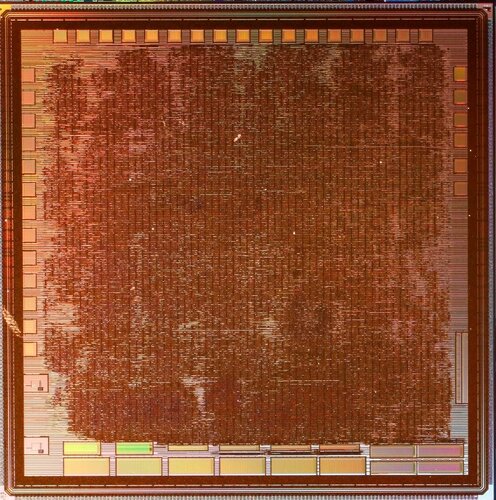
28.04.2025
ACES in space
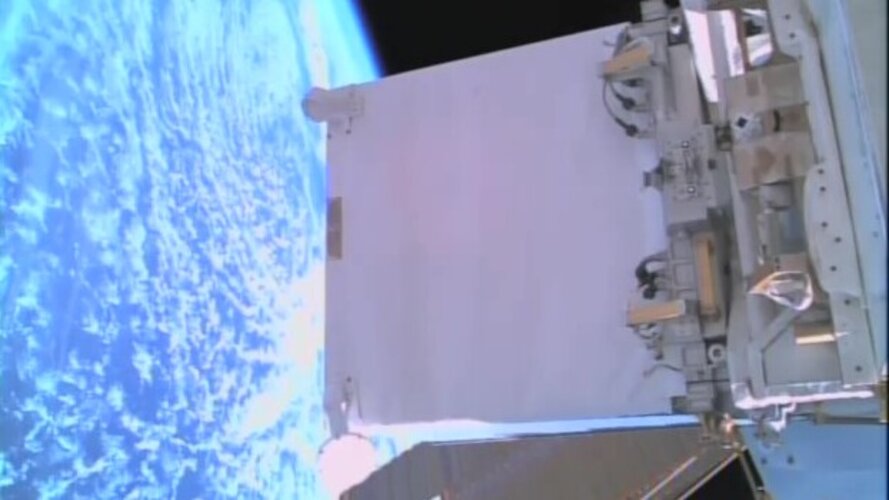
22.01.2024
ESA’s NavLab drone
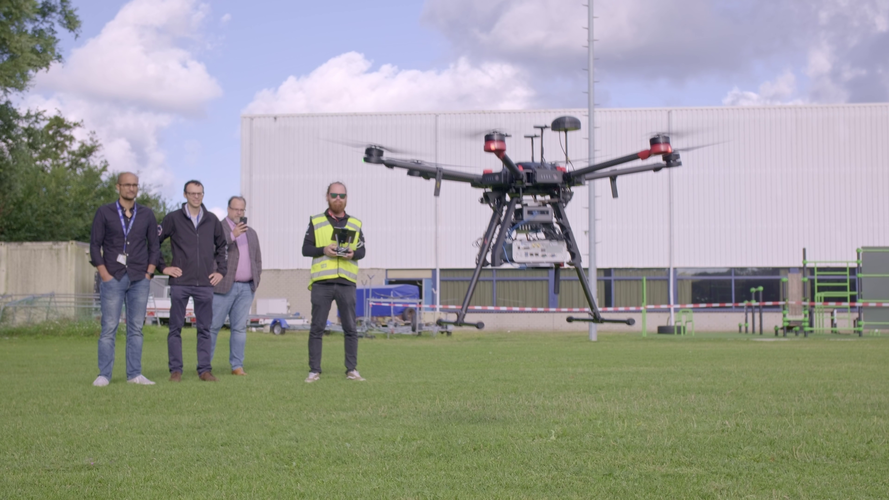
10.01.2024
Micro-world within atomic clock
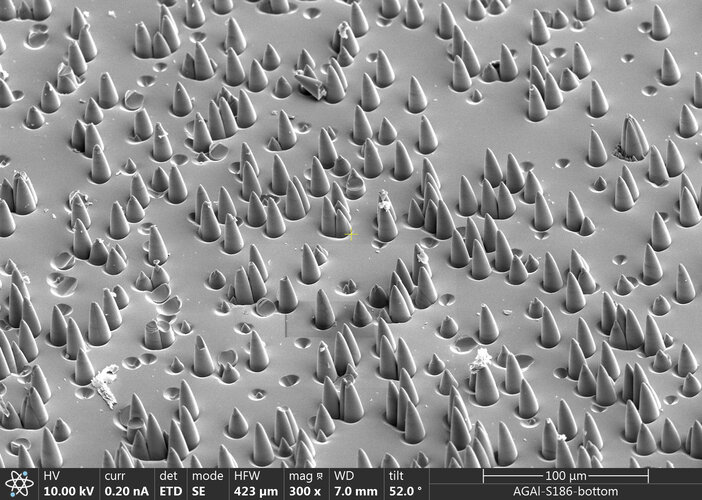
14.12.2023
New instruments for Galileo’s tomorrow
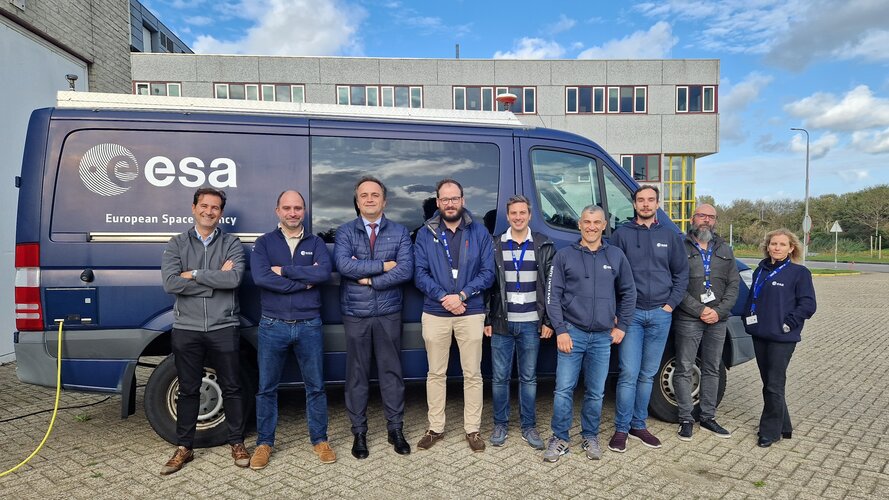
05.12.2023
NAVISP Industry 2023 @ ESTEC
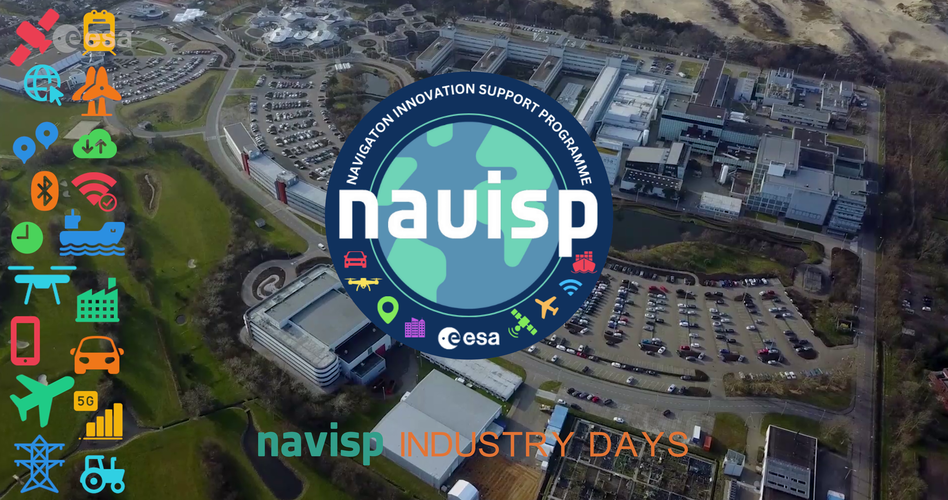
30.11.2023
Navigation and telecommunications testbed vehicles at ESTEC
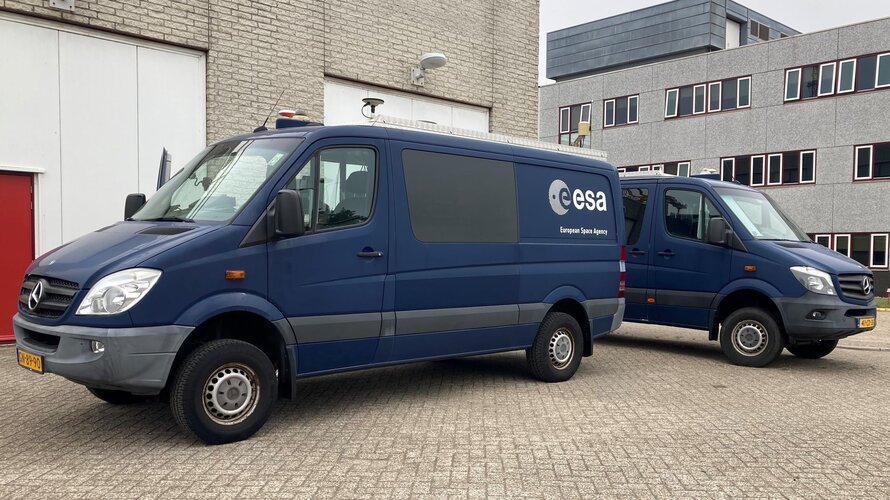
27.11.2023
Can AI help prevent attacks on location tracking data signals?
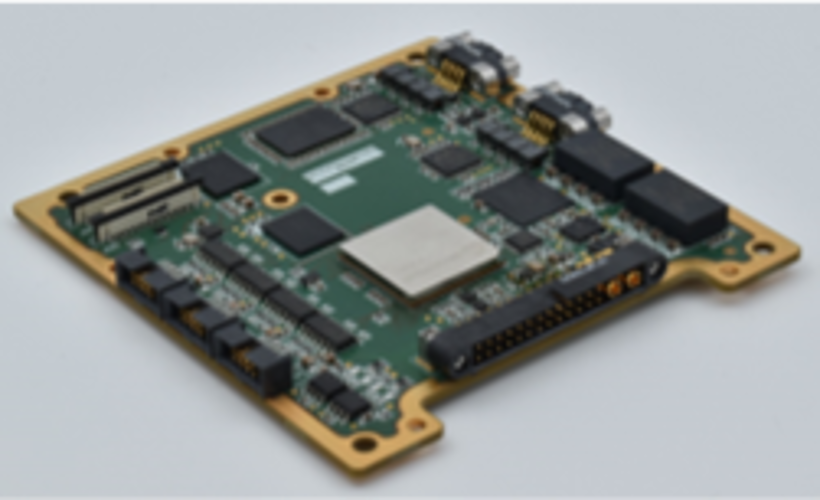
06.10.2023
Seven ways to use a CubeSat swarm
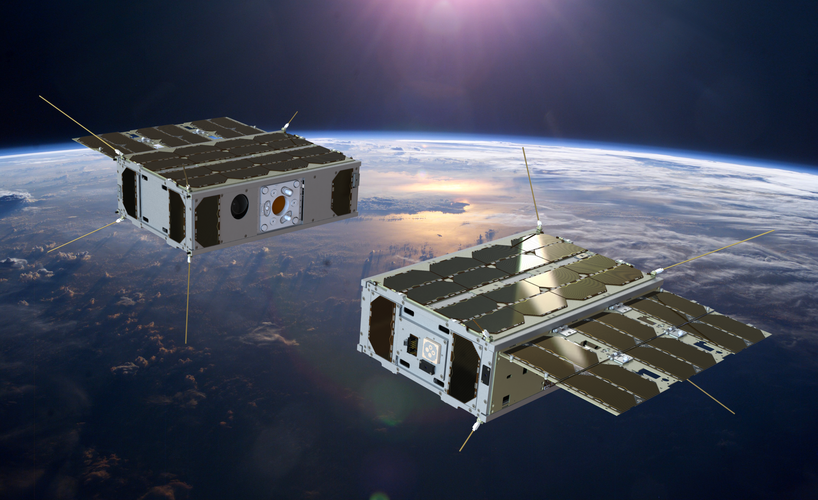
09.06.2023
Satnav from Earth to the Moon
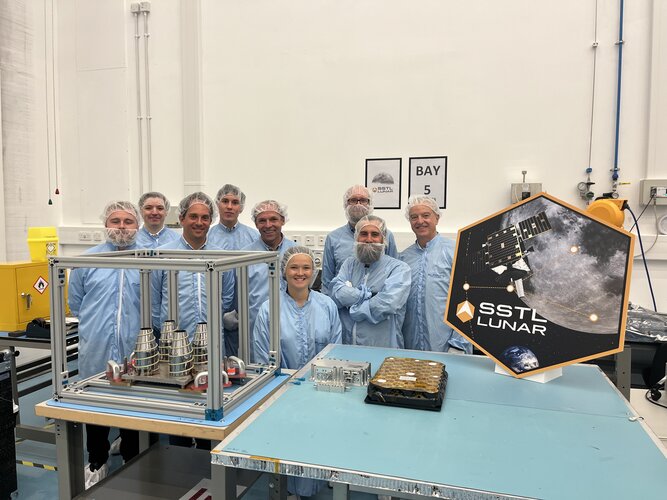
08.03.2023
Navigation Lab exploring Galileo’s future – and beyond
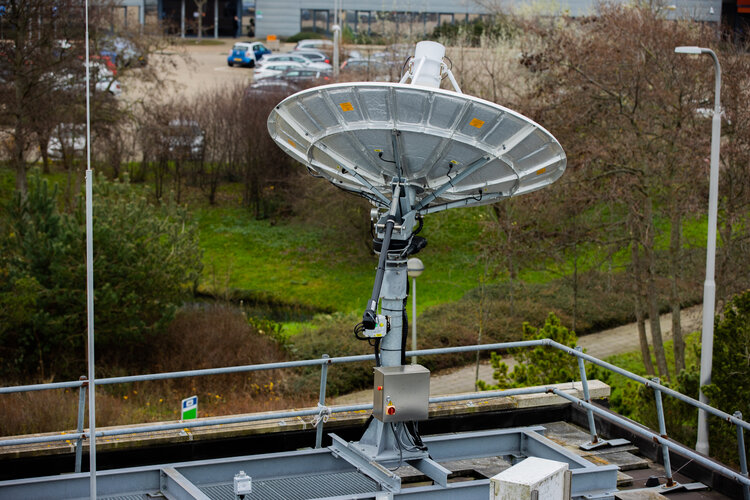
03.01.2023
Simulator Uses GNSS to Track Railway Positioning
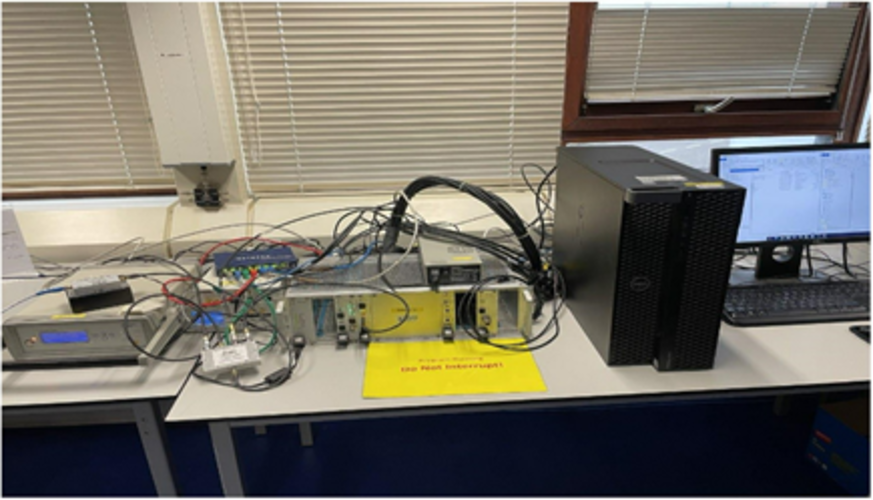
Related news
05.08.2022
Dust Contamination Effects & Mitigation for Lunar & Martian Surface Mission
#news
04.08.2022
ESA testing sensor network for smart city navigation
#news
14.04.2022
COMET upgrade for ESA’s mission design centre
#news
04.03.2022
Aerial Antenna Test for Venus Mission
#news
10.02.2022
The drone has landed
#news
02.02.2022
Roof of the Satnav World
#news
07.09.2021
Competing companies developing payload to make air from moon-dust
#news
28.07.2021
Feel the Force
#news
Learn more about the Navigation Laboratory
FOR FURTHER INFORMATION REGARDING THE ACCESS TO THE LABORATORY
Contact us via Email



